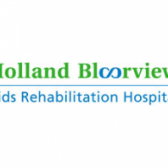Creating a Sustainability Action Plan
Purposeful Hourly Rounding: Creating a Sustainability Action Plan

Summary
The purpose of our Advanced Clinical Practice Fellowship was to build on our knowledge, skill and expertise in Best Practice Guideline (BPG) implementation with a focus on learning how to sustain and spread BPG work that promotes practice change as recommended by the RNAO BPG “Preventing Falls and Reducing Injury from Falls, 4th Ed.”
Holland Christian Homes is an organization that offers a continuum of care to seniors ranging from independent living apartments, assisted living and long-term care. As part of the organization there are two Long-term care facilities, known as Grace Manor and Faith Manor. Each manor is home to 120 residents each and includes registered and allied health care professionals caring for a mainly senior population.
In 2017, Holland Christian Homes was accepted into the pre-designation partnership with the RNAO to become a Long-Term Care Best Practice Spotlight Organization. As part of this initiative, the organization set out on a journey to implement three Best Practice Guidelines in our Long-term care facilities. One of the guidelines we implemented was the “Preventing Falls and Reducing Injury from Falls 4th ed.” Building on the work of our Falls Team and the implementation of the Falls best practice guideline, our ACPF focused on how to design, develop and execute an effective sustainability action plan specifically targeting one recommendation of the Falls BPG – recommendation 5.3 “implement rounding as a strategy to proactively meet the person’s needs and prevent falls”, also known as Purposeful Hourly Rounding.
As a nursing leadership group, we searched the literature for an effective sustainability model that would work for our organization. Through this process we discovered the NHS Sustainability Model and Guide[1] which we used to develop our sustainability action plan. We also collaborated with other Long-term care facilities to learn about successful sustainability strategies that were used at other organizations in order to help us formulate our own plan. Lastly, we wrote a manuscript on our experience in the development of a sustainability action plan. We have successful created a sustainability action plan for recommendation 5.3 which will be used to guide the long-term sustainability of Purposeful Hourly Rounding at both Grace and Faith Manor.
[1]NHS Institute for Innovation and Improvement (2010). NHS Sustainability Model and Guide. Retrieved from https://www.england.nhs.uk/improvement-hub/wp-content/uploads/sites/44/2017/11/NHS-Sustainability-Model-2010.pdf
Outcomes
Fall prevention is a challenging issue in Long-Term Care. The main outcome of the hourly purposeful rounding strategy is to proactively meet the person’s needs and prevent falls. Certainly, reduction of falls is a priority, but most importantly, reduction of injuries associated with these falls is imperative, especially significant injuries such as head trauma and fractures which can lead to significant disability and even death. Other potential benefits of purposeful rounding include reduction of pressure injuries, improved patient satisfaction, and improved patient perception of staff responsiveness to needs[1]. The demographics of long-term care residents in Ontario includes a high needs group of individuals with 85% of residents requiring extensive help with activities of daily living. 90% of residents also have some form of cognitive impairment and of this, 64% have severe impairment[2], placing them at an elevated safety risk especially in regards to falls as their cognitive impairment can often cause them to forget falls prevention strategies, or to be unaware of their physical limitations.
We have had significant success with the implementation of purposeful hourly rounding at Faith Manor and through this ACPF we were able to initiate the spread of this recommendation to Grace Manor and develop a sustainability action plan which will allow both Manors to sustain the practice change long-term.
The NHS Sustainability Model and Guide identifies 3 key domains: Process, Staff and Organisation. From these domains it breaks down 10 factors that are important in sustainability. Using this model, we were able to identify 4 factors where we were performing strongly – benefits, credibility of the evidence, involvement and training, and clinical leaders.
We were also able to identify 6 factors that needed further development for successful sustainability. The factors that we identified were, infrastructure, fit with goals and culture, senior leadership, behaviours, monitoring progress and adaptability. We were able to create an action plan specifically targeting our weaker 6 factors based on the model. We utilized our existing falls team, staff meetings and leadership team to construct goals based on feedback at various levels throughout the organization.
[1]RNAO Clinical Best Practice Guidelines. (2017). Preventing Falls and Reducing Injury from Falls 4th ed. Retrieved from https://rnao.ca/sites/rnao-ca/files/bpg/FALL_PREVENTION_WEB_1207-17.pdf
[2]Ontario Long Term Care Association. (2019). About long-term care in Ontario: facts and figures. Retrieved from https://www.oltca.com/oltca/OLTCA/Public/LongTermCare/FactsFigures.aspx
Overall experience
This experience has increased our knowledge substantially in the strategies and importance of building sustainability into the development of any project. From this experience, we will be able to continue to use the NHS Sustainability model and guide to re-evaluate our progress as it relates to purposeful hourly rounding, but also, use it for other projects to help use identify and measure successes of sustainability. We have learned that sustainability is an important tool to introduce not only at the end of a project, but actually at the start. This important learning will ensure that we methodically analyse and measure our organizations readiness for change prior to implementation.
